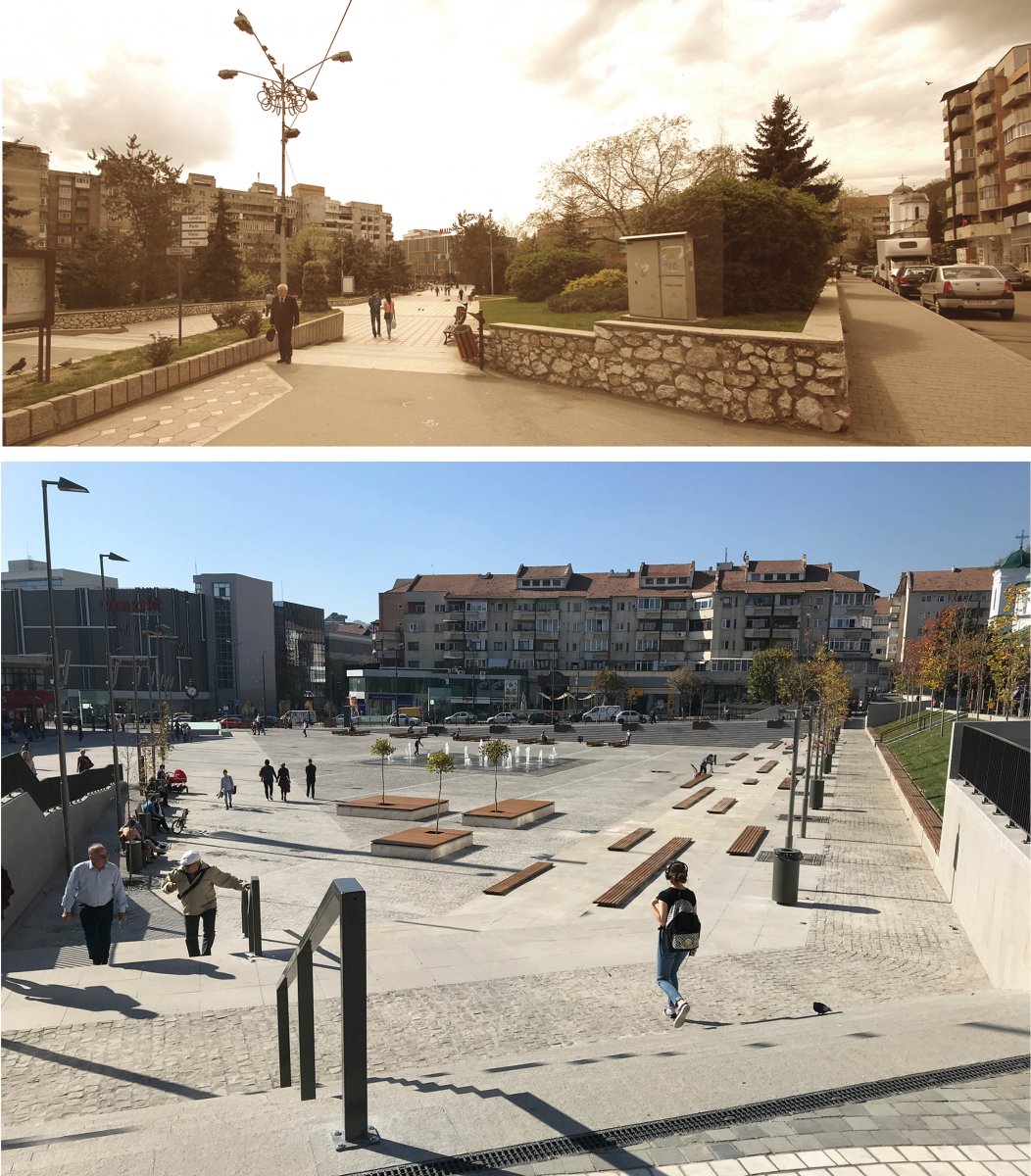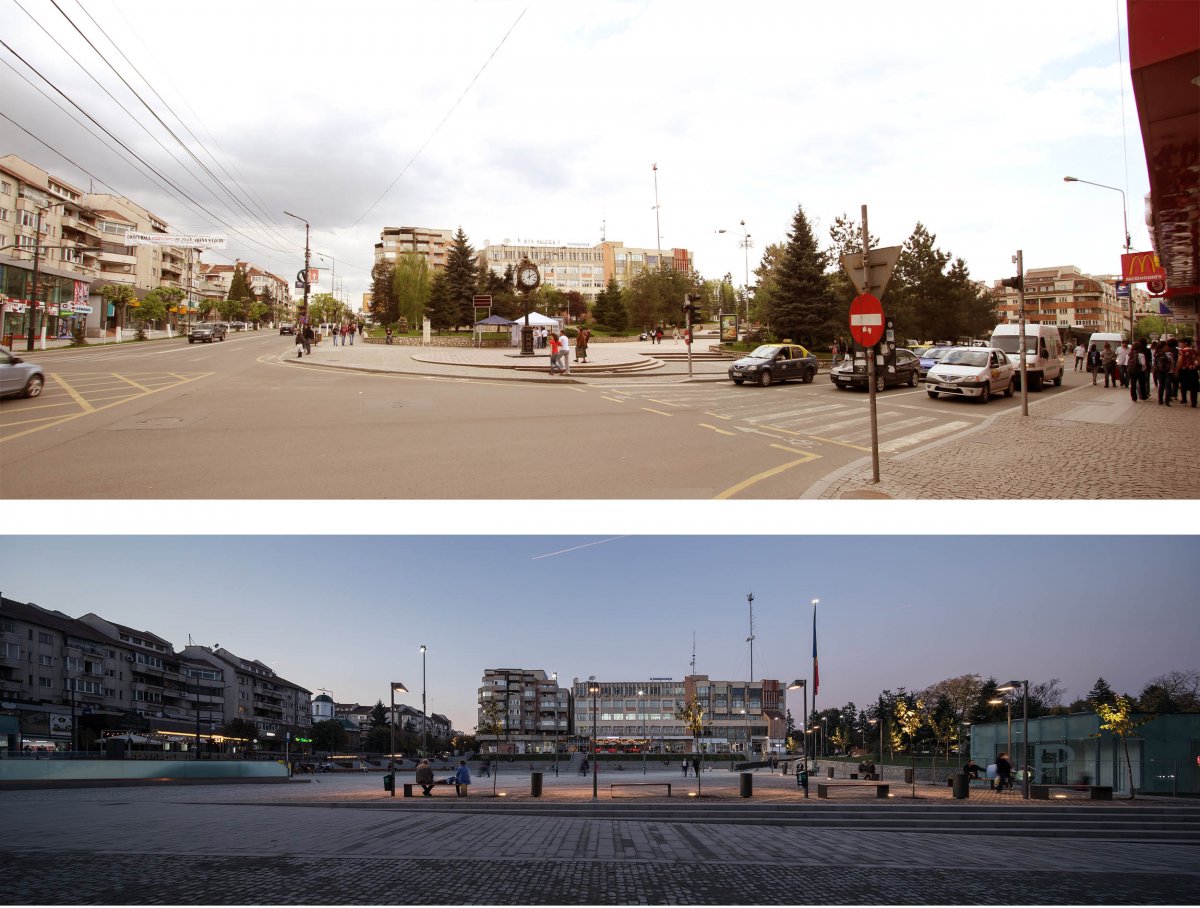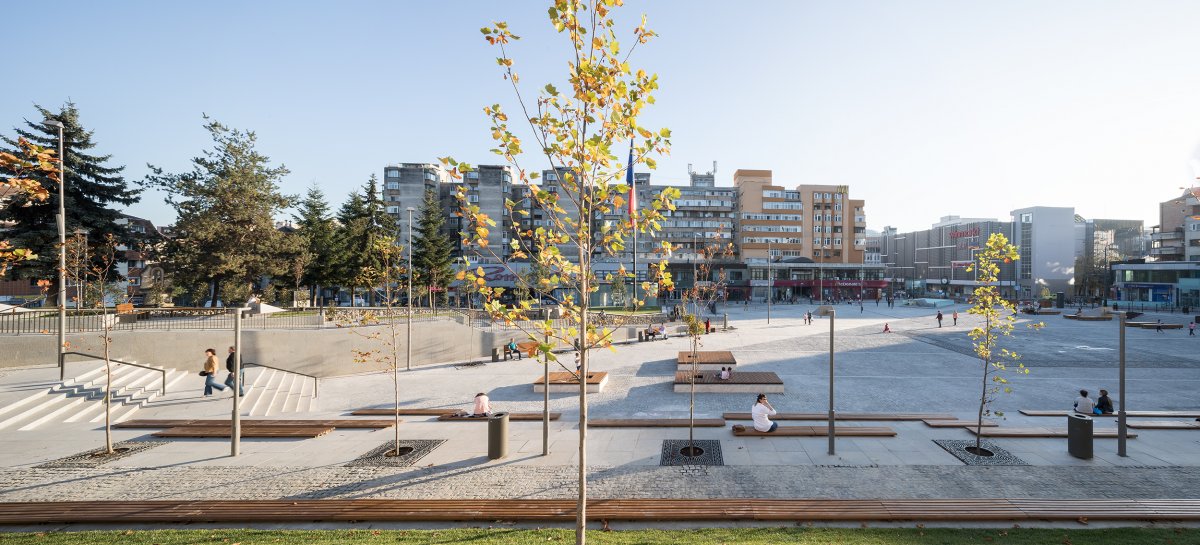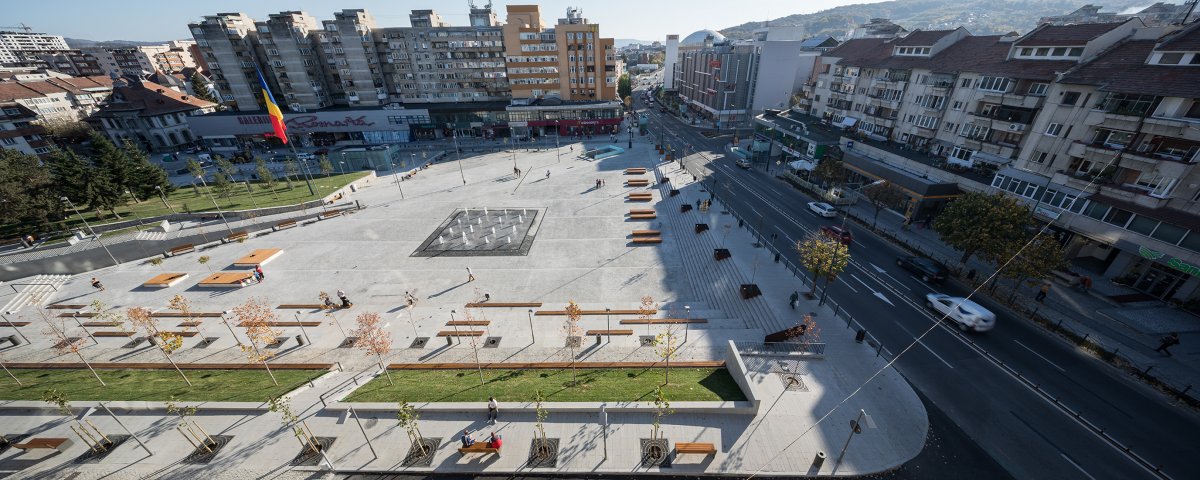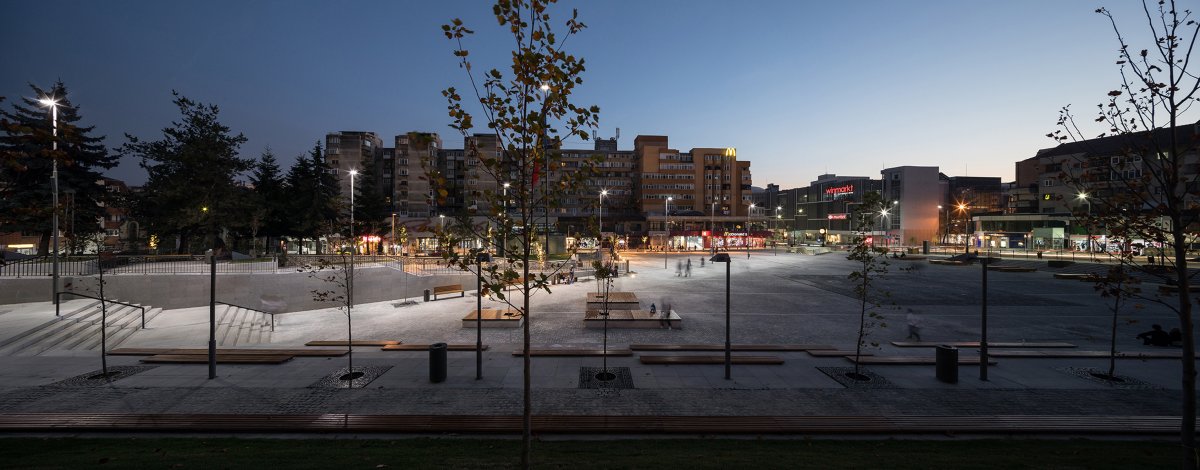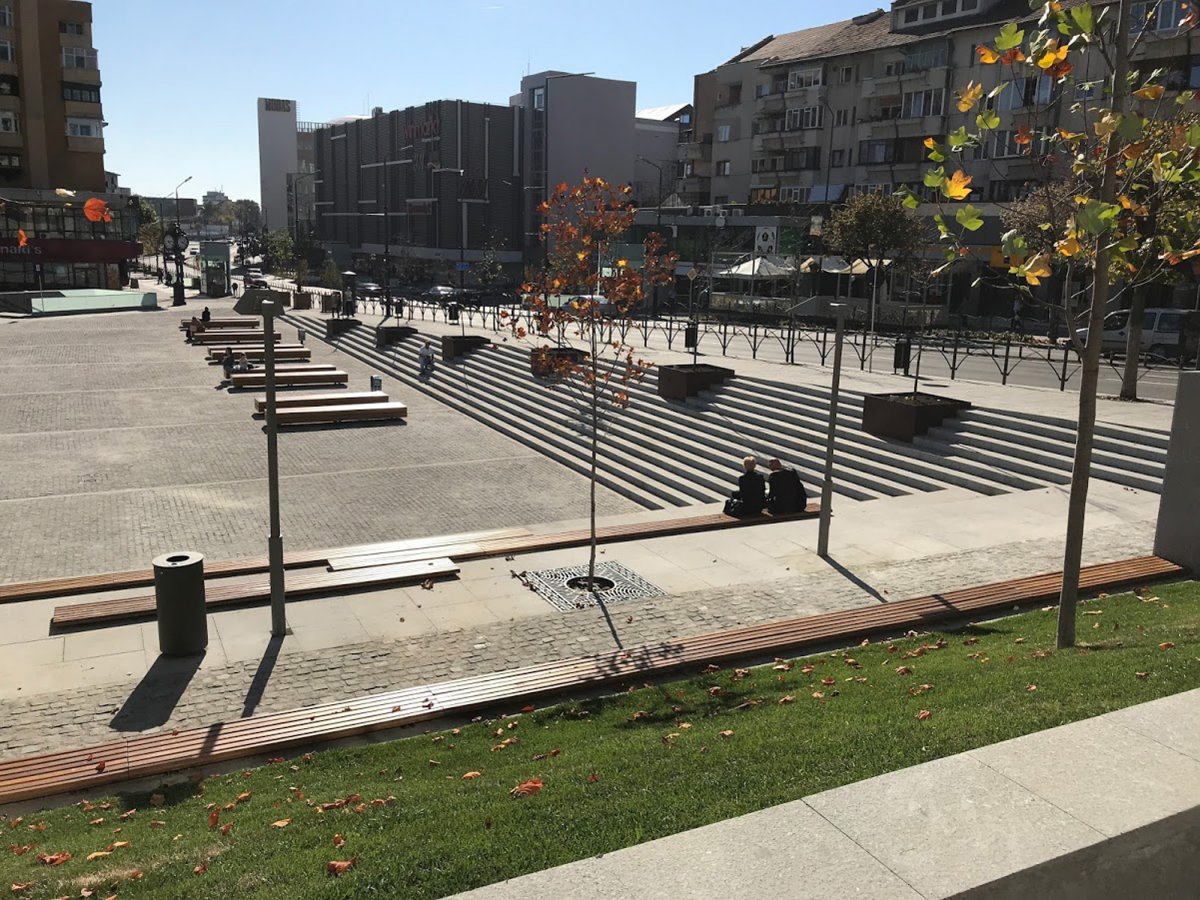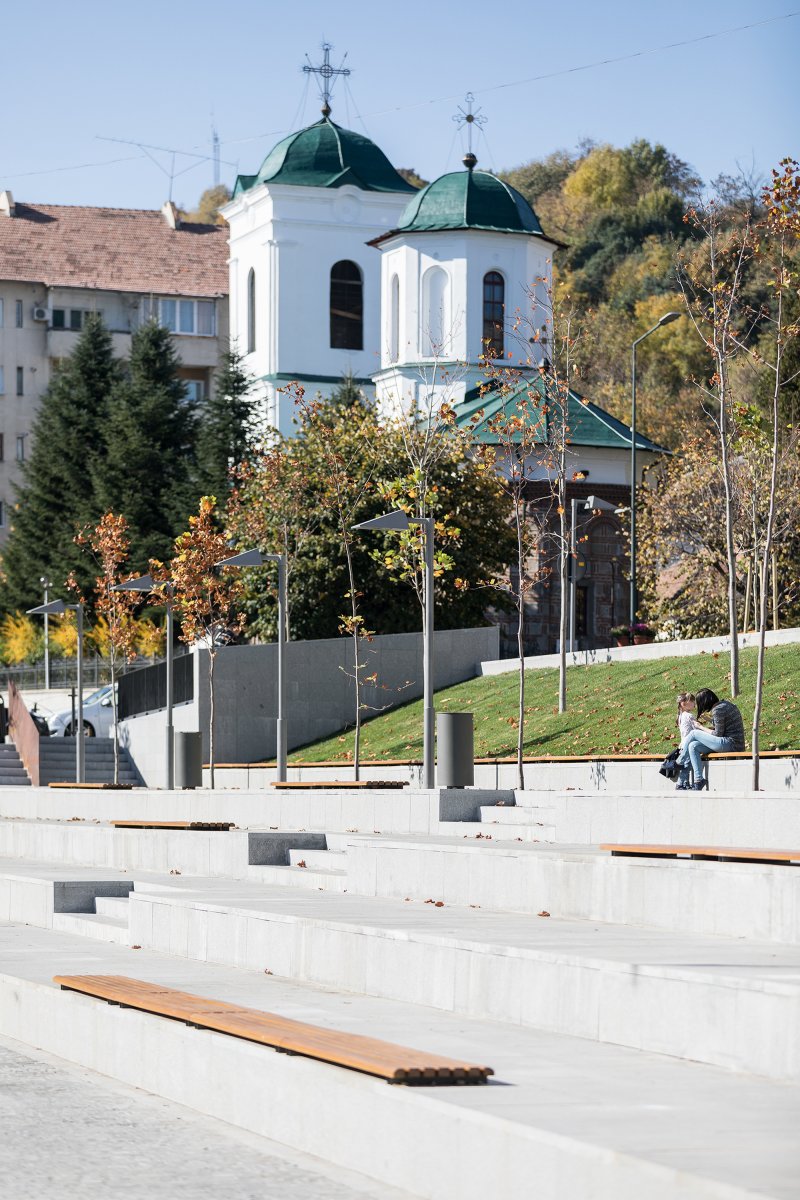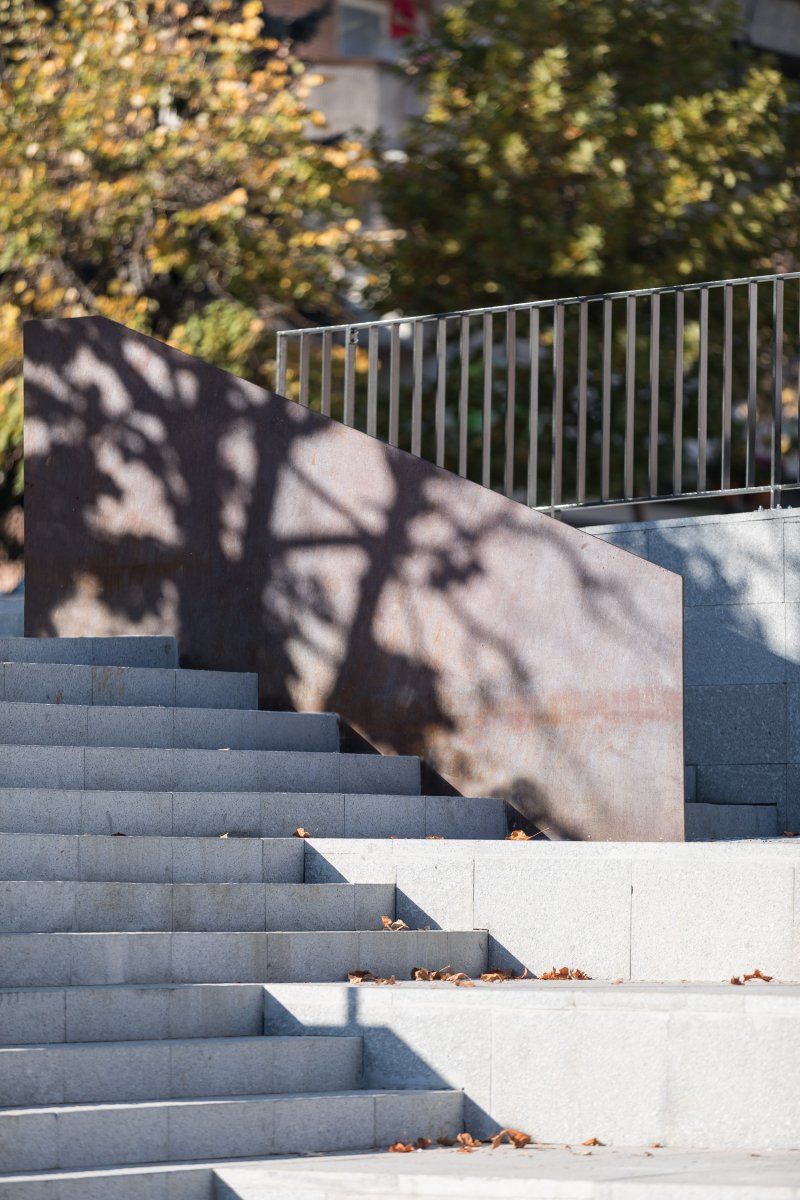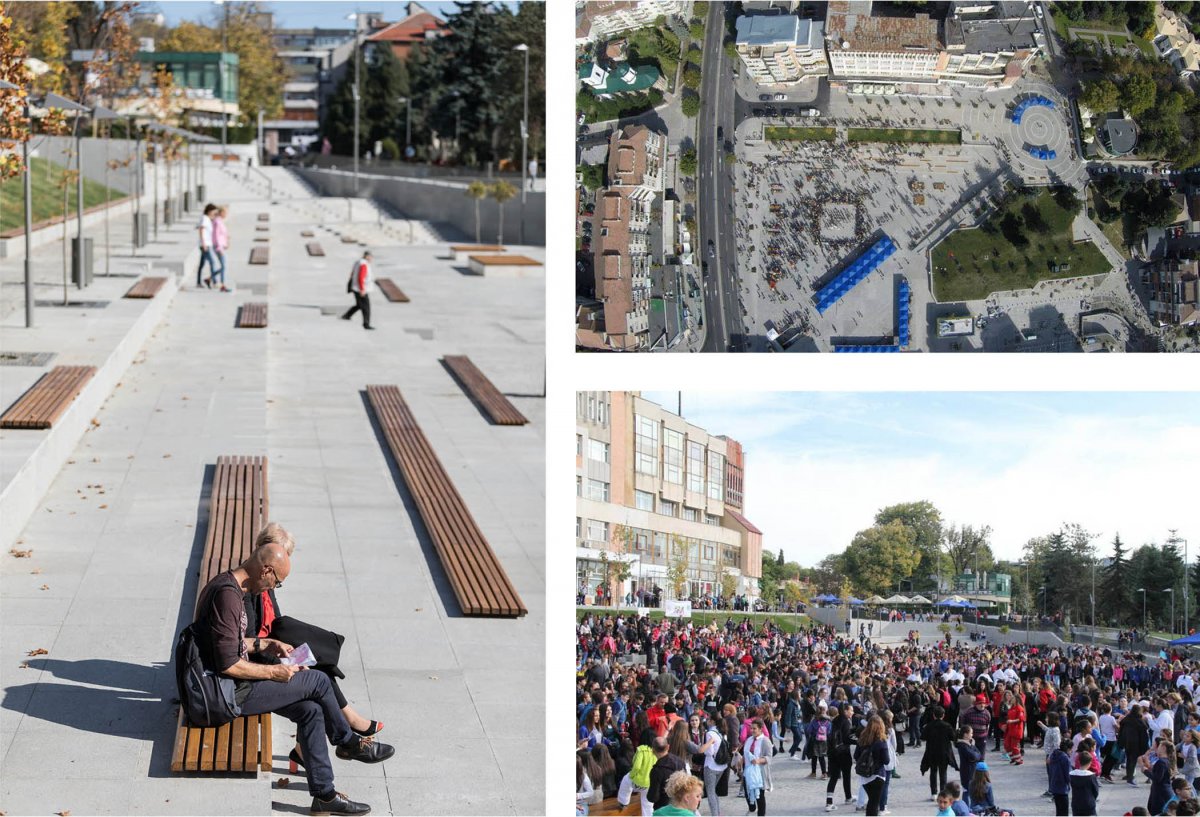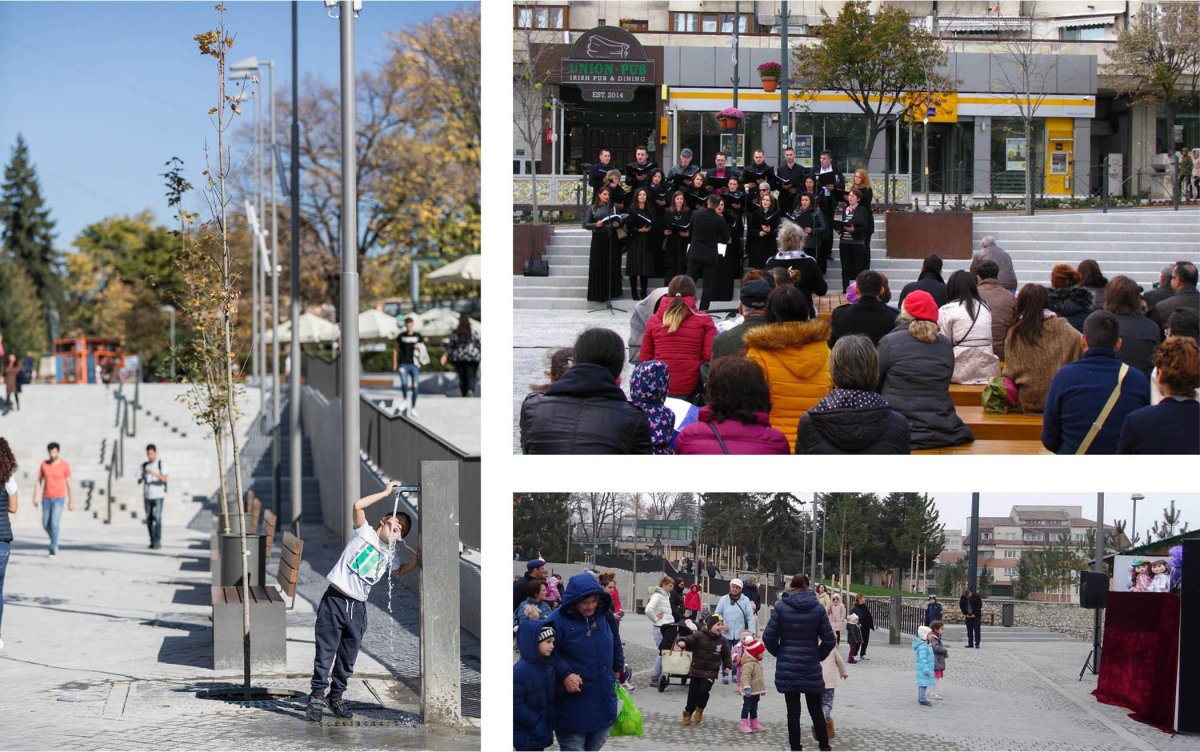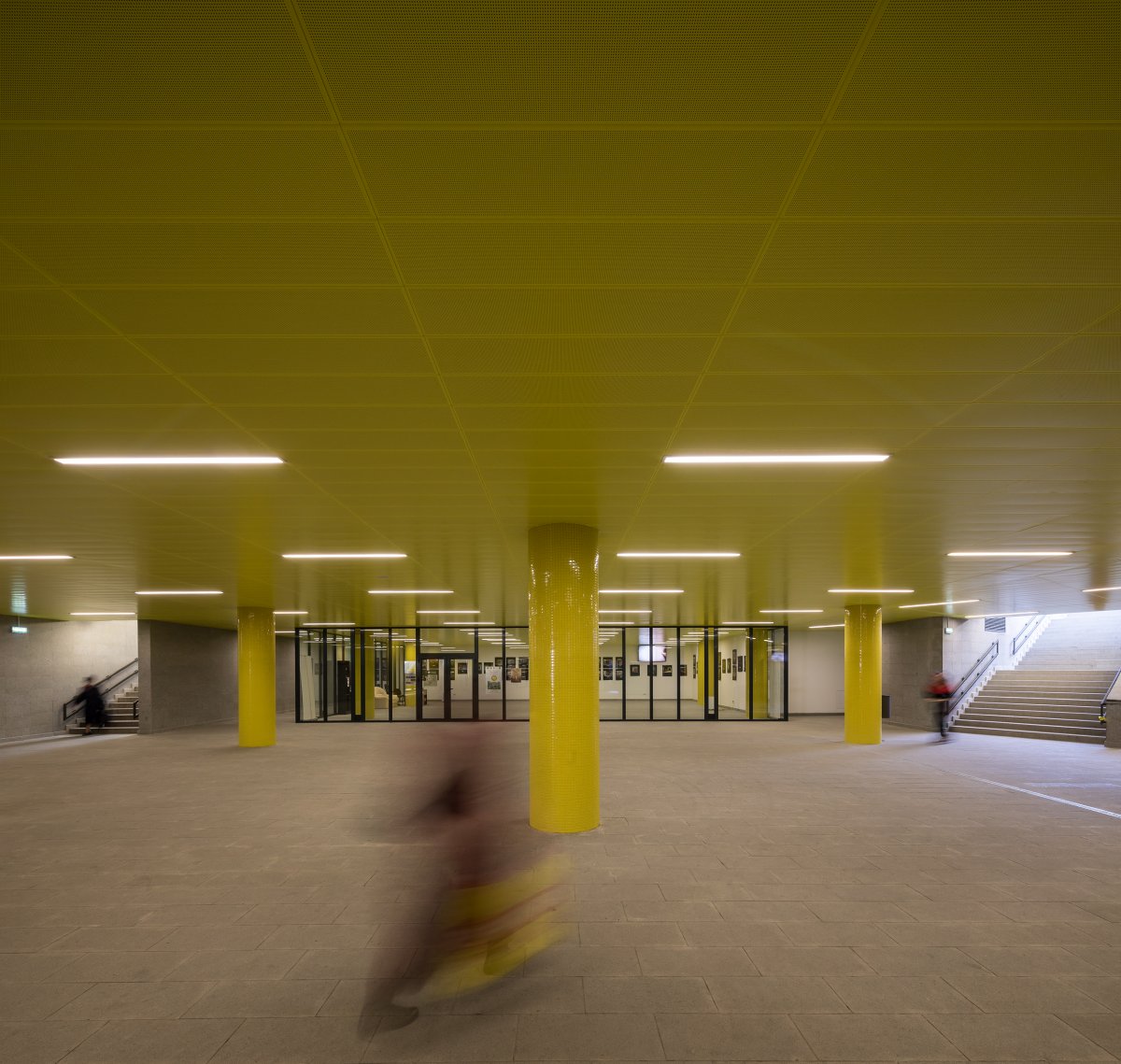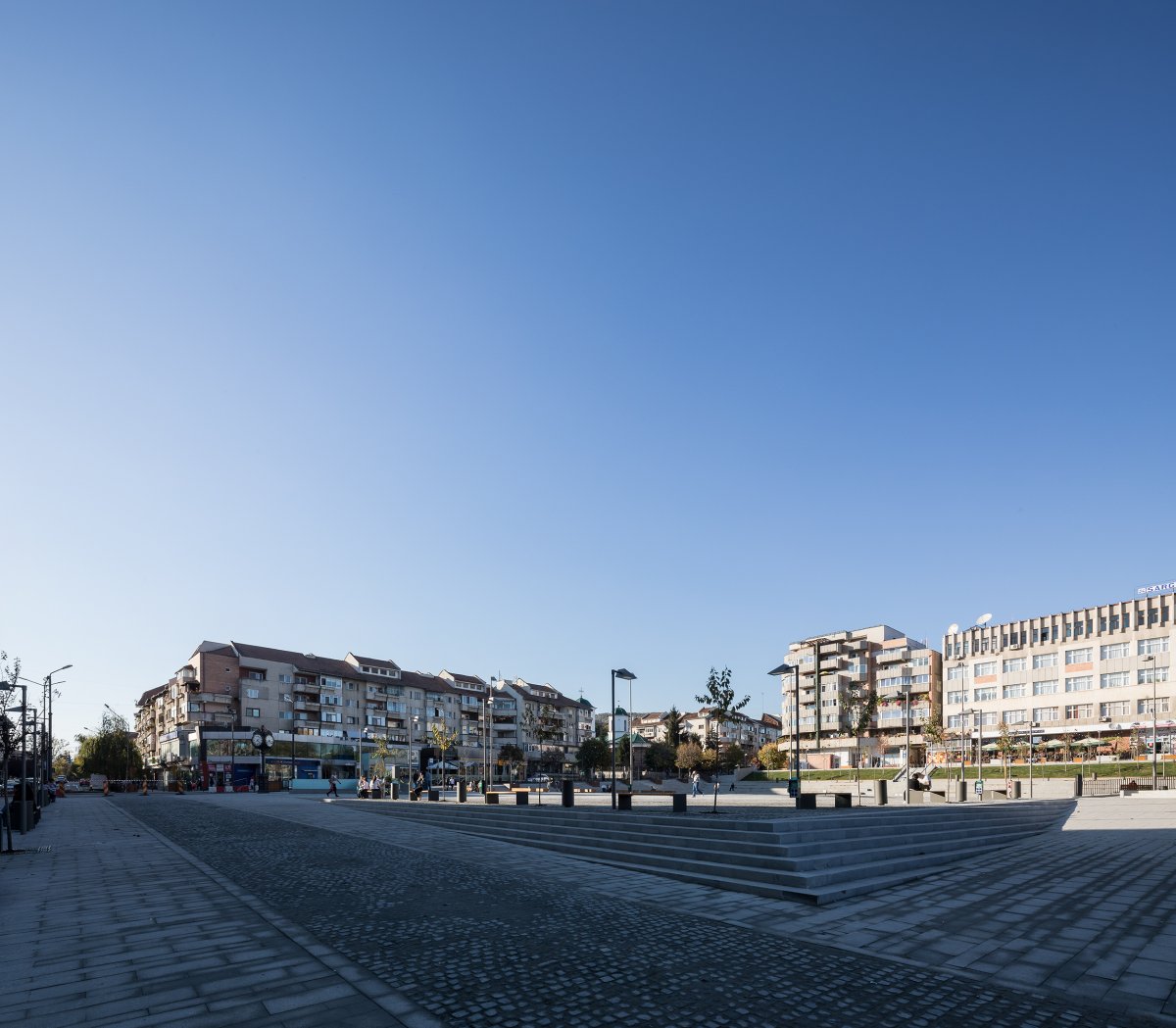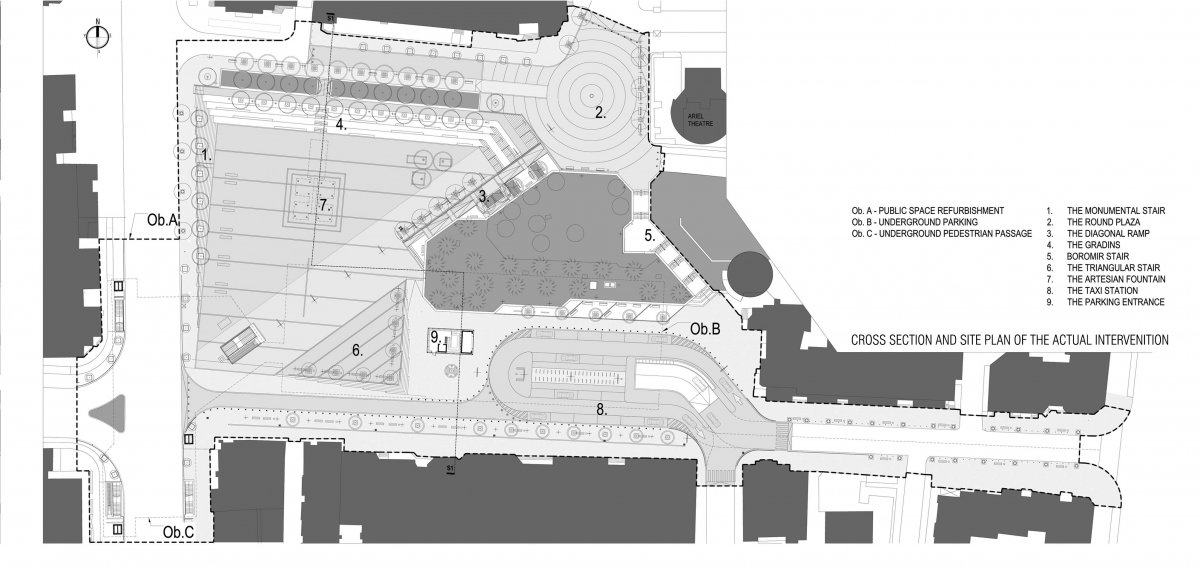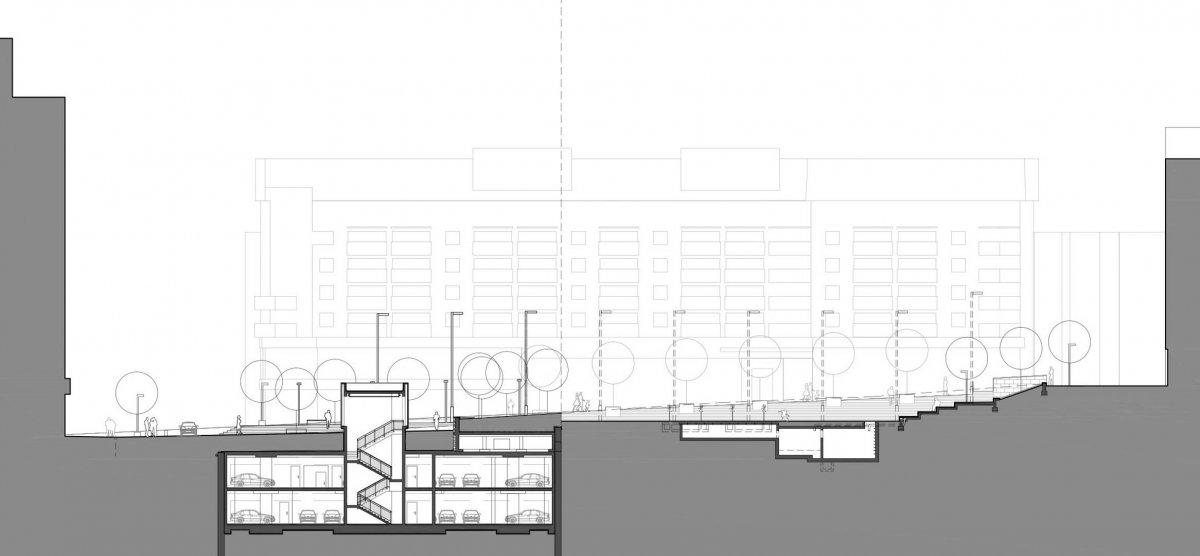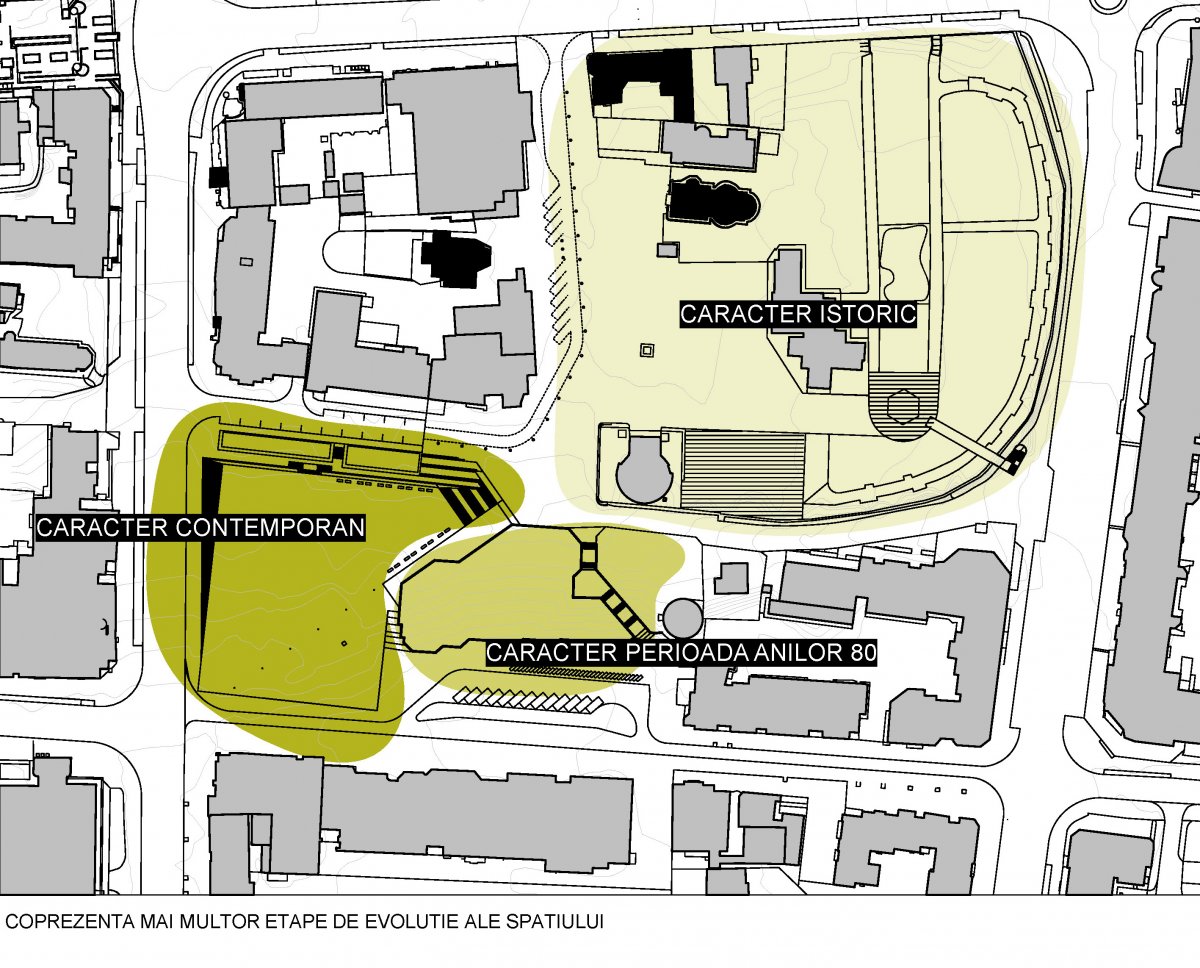The refurbishment of the central public space, Râmnicu Vâlcea, RO
Râmnicu Vâlcea is a small-to-medium size city, the head of one of Romania’s 42 counties. It is located in the centre of the country, at the foothills of the Carpathian Mountains. When being engaged in the 2012 national public competition to refurbish the city centre of Râmnicu Vâlcea, which the architects eventually won, their first impression was that the main problem of the site was just that it had an obsolete design and understanding of the public space. The centre had previously suffered a rather brutal intervention in the period from 60’s to 80’s, when most of the old houses and streets were replaced with blocks of flats and larger avenues. One central island with a diagonal street had been converted into the city’s central public plaza, having a park-like design, with alleys, sloping green space and small paved platforms at different heights. The post-war totalitarian regime in Romania had always feared large spontaneous gatherings of people, that is why a common feature of public space design in the communist Romania was the park-type organization: alleys between green spaces, the best response to a “Keep walking, comrades, and keep off the grass!” formula. This type of spaces contributed to social alienation and the distruction of the concept of community. With their proposal, the architects wanted to recreate a democratic space that would help to re-enable a sense of local community, the civic and participatory spirit. They sought not to redesign and erase almost everything, as the previous intervention had done, but to identify and keep the valuable features and update the area to a contemporary understanding and use of the public space, which they basically considered as a larger flat open space. The initial gradin-like platforms, as well as the entire park-like organization, were not friendly to large crowds of people. The architects had to “make space”, keeping it horizontal and minimize the green areas, replacing the grass with pavement and grid protections for the trees. In this respect, one major zone of green space was preserved from the previous landscape design as it was. Following the Client’s decision to build an underground pedestrian passage under the central intersection and an underground parking with a footprint partially coincided with the green space, the architects had to rebuild the latter to its previous state. They unified the other green spaces and platforms of the park into one large rectangular space, the Square. The old trees, initially evenly distributed on the green spaces, would be removed and new ones would be plant on the sides of the square, so that they did not obstruct the view when large events are held. Due to a three-meter level difference along the north-south direction of the site, and one meter along the east-west direction, the architects decided to lower the new square’s level. Thus, the new configuration partially resembles to an open-air amphitheatre. Its “zero” point would be the south-west corner of the square. The rectangular square would be connected with its surroundings through different types of stairs, all of them being very important elements, bearing different names in the project, accordingly: the Monumental Stair, the Gradins, the Triangular Stair, the Diagonal stair, the Diagonal Ramp. The monumental stair is rhythmed by corten planters that match the colour of the opposite church’s brick walls and the tiles of the blocks’ roofs. The ramp is not merely a tool for people with disabilities, instead it has pocket-platforms that allow people to sit and rest or watch the square show. The diagonal crossing, as a memory of the old street (which was kept as the main alley in the previous intervention, too), is marked in the pavement by using cut andesite paving stone opposed to rough andesite used for the rest of the square. Moreover, in the evening, its direction is outlined by a row of powerful tall light posts. The centre of the square is equipped with an artesian fountain. A small plaza with circular paving was organized at the upper north-east side of the square. Its centre accommodates the traditional place for the Christmas tree in winter. The streets at the north and at the south of the square were turned into pedestrian streets and inside the taxi station a bicycle parking was set that goes around the access to the underground parking. The architects hope that the Square will also fulfill its purpose as an agora for the city, where people can celebrate but also show their disagreements, much needed in a young democracy such as the Romanian.
